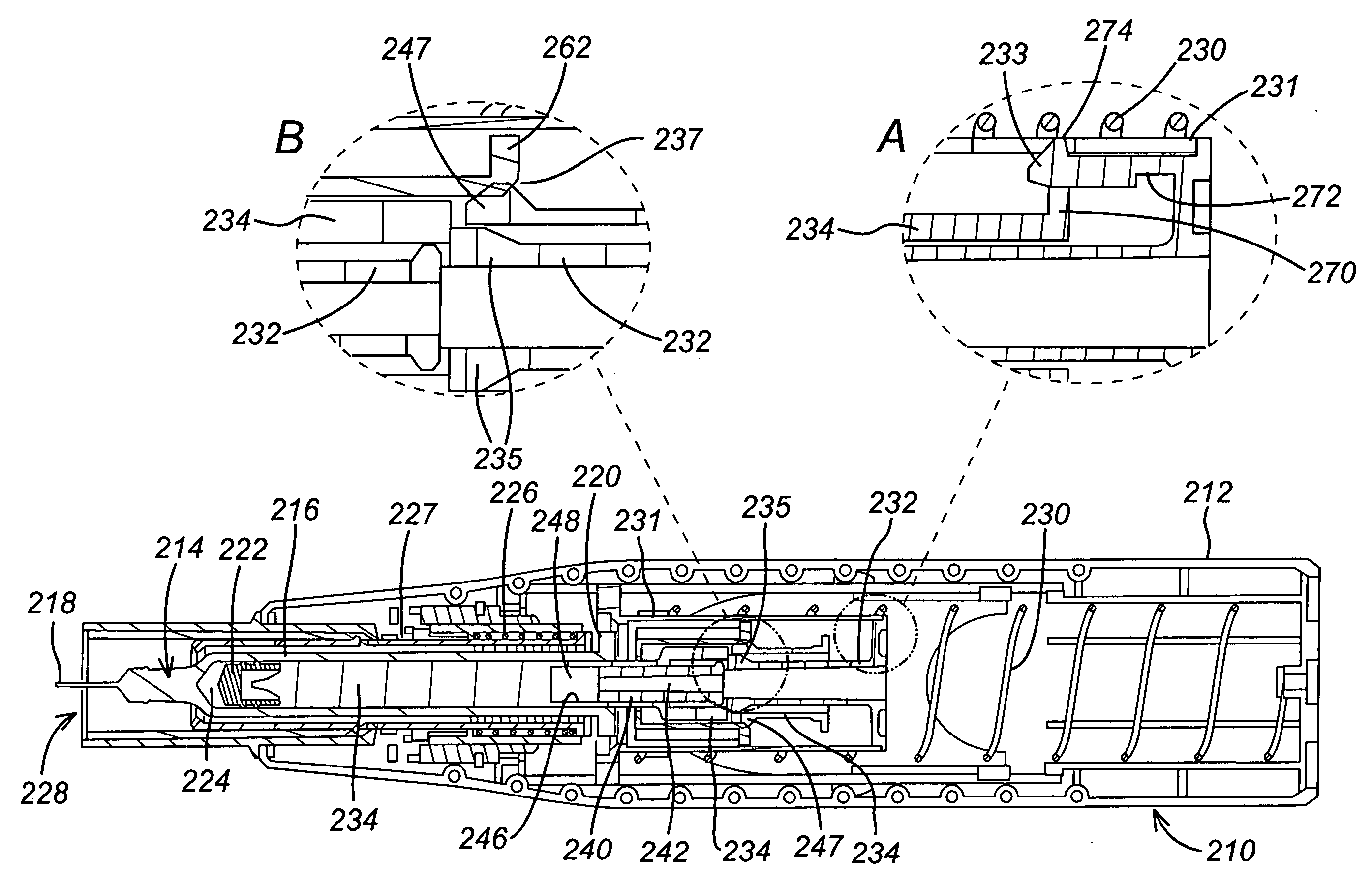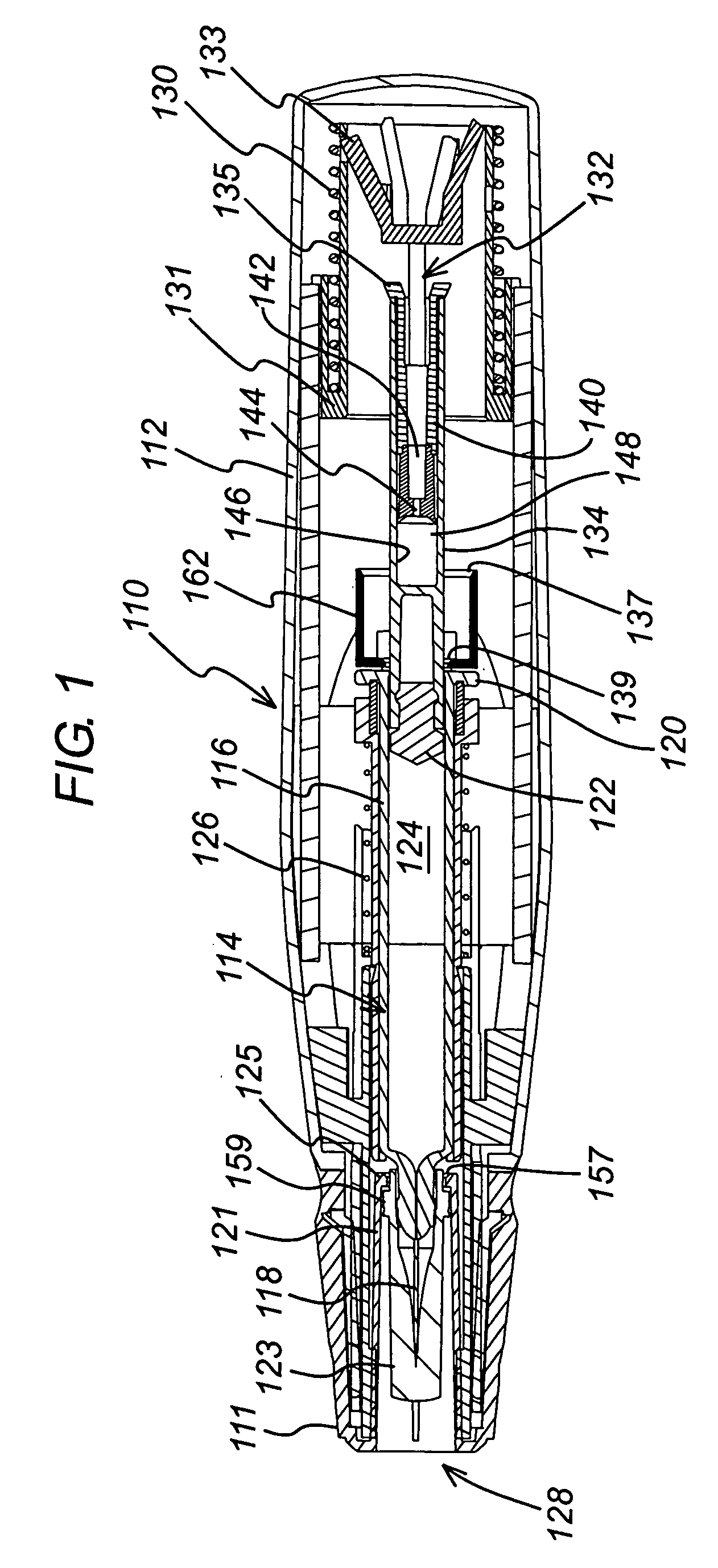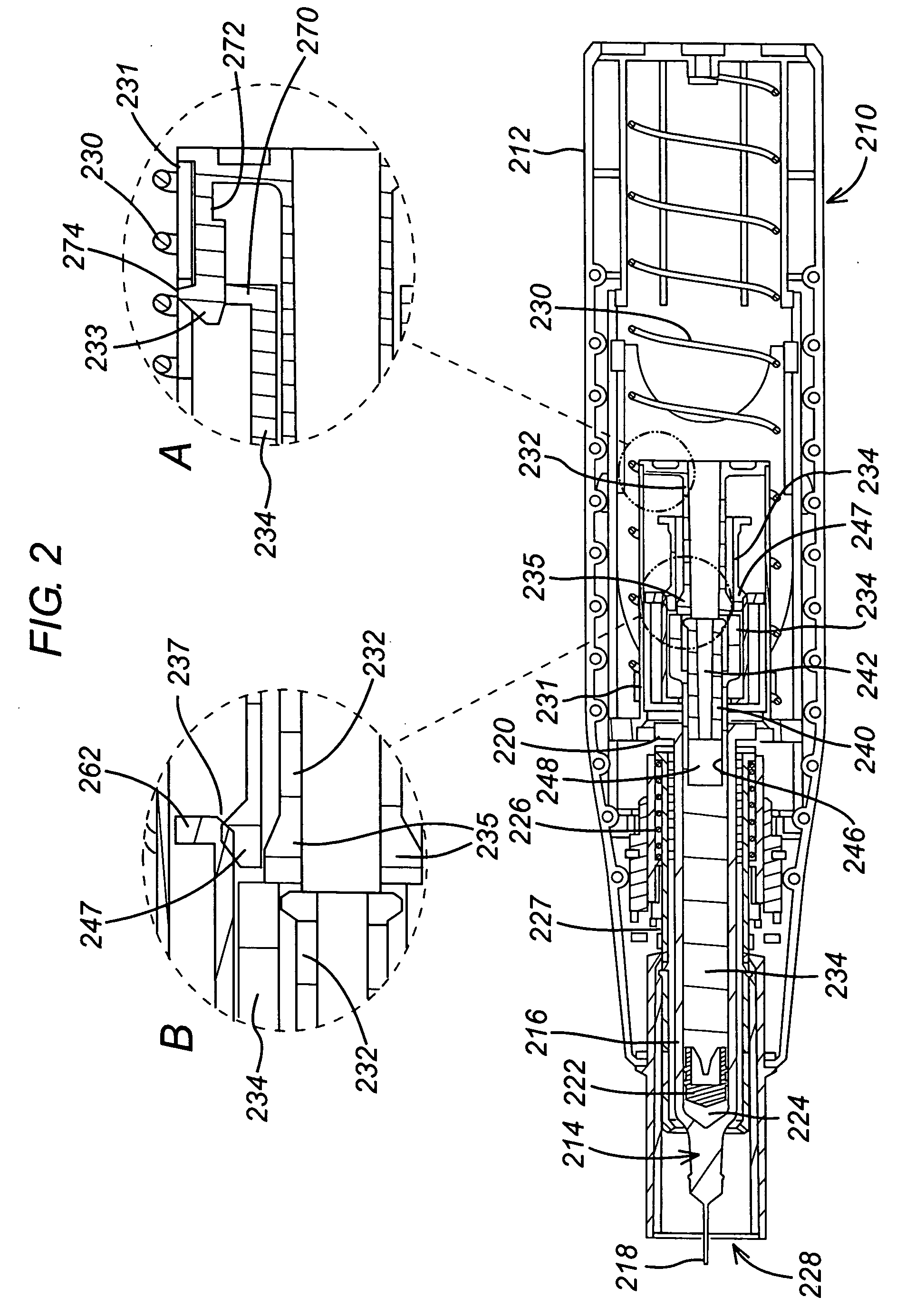Injection Device
a technology of injection device and lever, which is applied in the direction of intravenous device, infusion needle, ampoule syringe, etc., can solve the problems of affecting the reliability of the unlatching mechanism itself, difficult delatching, and relatively high delatching for
- Summary
- Abstract
- Description
- Claims
- Application Information
AI Technical Summary
Benefits of technology
Problems solved by technology
Method used
Image
Examples
Embodiment Construction
[0061]FIG. 2 shows an injection device 210 in which a housing 212 contains a hypodermic syringe 214. The syringe 214 is again of conventional type, including a syringe body 216 terminating at one end in a hypodermic needle 218 and at the other in a flange 220, and a rubber bung 222 that constraints a drug 224 to be administered within the syringe body 216. The conventional plunger that would normally be connected to the bung 222 and used to discharge the contents of the syringe 214 manually, has been removed and replaced with a multi-component drive element as will be described below. Whilst the syringe illustrated is again of hypodermic type, this need not necessarily be so. As illustrated, the housing includes a return spring 226 that biases the syringe 214 from an extended position in which the needle 218 extends from aperture 228 in the housing 212, to a retracted position in which the hypodermic needle 218 is contained within the housing 212. The return spring 226 acts on the s...
PUM
 Login to View More
Login to View More Abstract
Description
Claims
Application Information
 Login to View More
Login to View More - R&D
- Intellectual Property
- Life Sciences
- Materials
- Tech Scout
- Unparalleled Data Quality
- Higher Quality Content
- 60% Fewer Hallucinations
Browse by: Latest US Patents, China's latest patents, Technical Efficacy Thesaurus, Application Domain, Technology Topic, Popular Technical Reports.
© 2025 PatSnap. All rights reserved.Legal|Privacy policy|Modern Slavery Act Transparency Statement|Sitemap|About US| Contact US: help@patsnap.com



